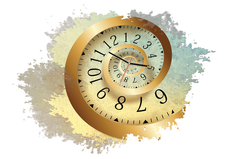Choosing a storage snapshot tool
Clone It

Experts agree that you should keep a copy of your data, but restoring from incremental backups takes time and sometimes doesn't work as expected. Alternatively, you can capture your data in a snapshot. Read on for a review of some leading Linux snapshot tools.
Modern operating systems often include more than 100,000 files. In the event of system crash, bringing a system back online by restoring from incremental backups can be a complex and time consuming task. Data may even get lost along the way, if you forgot to back up certain directories or if you only created incremental backups without performing the occasional full backup.
Snapshots are a fast alternative to incremental backups. A snapshot is a copy of the dataset frozen at a point in time. This article compares several snapshot tools, including Clonezilla [1], CYA [2], Partimage [3], qt-fsarchiver [4], and Snapper [5]. See the "Not Considered" box for a few tools that did not make the list.
Requirements
Snapshot software differs greatly from backup software. A snapshot usually includes a drive partition. Unlike conventional backup sets, this unit cannot be supplemented and accelerated by differential or incremental partial backups.
[...]
Buy this article as PDF
(incl. VAT)
Buy Linux Magazine
Subscribe to our Linux Newsletters
Find Linux and Open Source Jobs
Subscribe to our ADMIN Newsletters
Support Our Work
Linux Magazine content is made possible with support from readers like you. Please consider contributing when you’ve found an article to be beneficial.

News
-
Say Goodbye to Middle-Mouse Paste
Both Gnome and Firefox have proposed getting rid of a long-time favorite Linux feature.
-
Manjaro 26.0 Primary Desktop Environments Default to Wayland
If you want to stick with X.Org, you'll be limited to the desktop environments you can choose.
-
Mozilla Plans to AI-ify Firefox
With a new CEO in control, Mozilla is doubling down on a strategy of trust, all the while leaning into AI.
-
Gnome Says No to AI-Generated Extensions
If you're a developer wanting to create a new Gnome extension, you'd best set aside that AI code generator, because the extension team will have none of that.
-
Parrot OS Switches to KDE Plasma Desktop
Yet another distro is making the move to the KDE Plasma desktop.
-
TUXEDO Announces Gemini 17
TUXEDO Computers has released the fourth generation of its Gemini laptop with plenty of updates.
-
Two New Distros Adopt Enlightenment
MX Moksha and AV Linux 25 join ranks with Bodhi Linux and embrace the Enlightenment desktop.
-
Solus Linux 4.8 Removes Python 2
Solus Linux 4.8 has been released with the latest Linux kernel, updated desktops, and a key removal.
-
Zorin OS 18 Hits over a Million Downloads
If you doubt Linux isn't gaining popularity, you only have to look at Zorin OS's download numbers.
-
TUXEDO Computers Scraps Snapdragon X1E-Based Laptop
Due to issues with a Snapdragon CPU, TUXEDO Computers has cancelled its plans to release a laptop based on this elite hardware.

